how to become fluent in spanish
What's the Best Way to Learn Spanish?
Save Save Save Save Save 




Save 
Has this question brought you to this post? You might be surprised to know that this question gets around one thousand Google searches every month!
Save 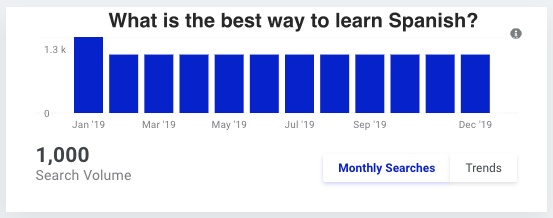
Other common questions among beginner and intermediate Spanish language learners relate to the fastest or easiest way to learn Spanish, or how to become fluent in Spanish.
What if we told you though, you've been asking the wrong question? The right question you should be asking is:
What's the Best System for Learning Spanish?
That's what you actually need to learn Spanish – a system.
We're going to talk you through everything you need to know about this in this pretty long (but beneficial) post. If you're in a hurry, you can use the links below to skip ahead.
How We Learn a Language
We can boil down learning a language into the key skills. When you learn Spanish, you need to be able to:
Save 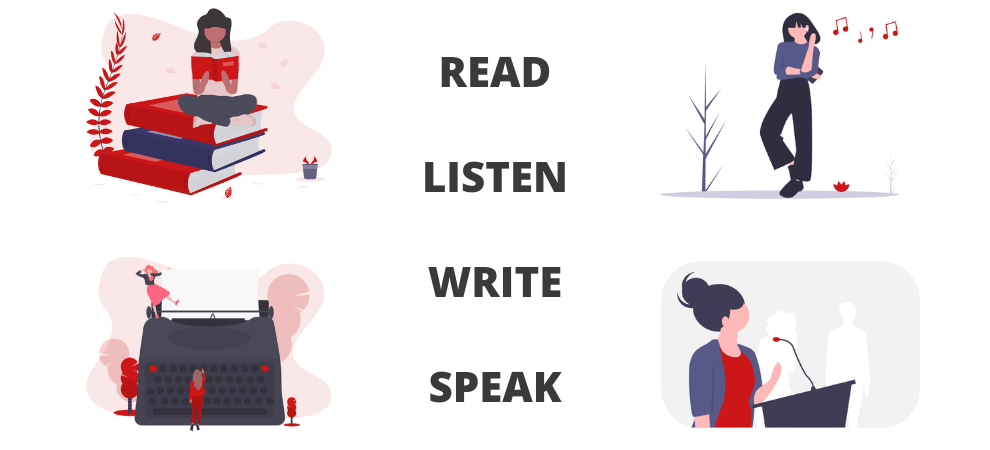
To master all four of these skills in Spanish, you will need to know a lot of words in Spanish (vocabulary) along with the rules to combine them in the right way (grammar). That's it.
You shouldn't really skip any of those skills. If you understand but can't speak or can speak but struggle with writing, then you haven't really learned Spanish.
When you start out from scratch in any language, the first thing you learn is to present yourself.
Hola, mi nombre es Paul. Vivo en Berlin.
Hello, my name is Paul. I live in Berlin.
Save 
In any class or course, you will learn to understand, read, write and say those sentences right from the very beginning.
That's how it works. You start there and with each new sentence and word you look at, you understand a little more.
Of course, it gets more complicated along the way but essentially you start here and progress until you reach that all-important goal: you become fluent in Spanish.
So, how do you actually become fluent in Spanish?
How to Become Fluent in Spanish - It's the System
Most people are under the impression that becoming fluent in Spanish only requires speaking and listening skills. But believe us – to be fluent, you also need reading, writing, vocabulary and grammar.
However you decide to learn these skills, if you want to become fluent in Spanish you need to follow a tested language learning system.
So, what is a learning system?
A learning system consists of:
- A syllabus or curriculum (what to learn and in what order)
- A method (how you learn and, if learning with a teacher, how your teacher teaches you)
Whether you're a self-motivated learner or joining a Spanish course with a teacher, you need a system to study Spanish at the optimal rate for you. If you want to learn Spanish fast, a system is the best way to motivate yourself, and it's the easiest way to learn Spanish!
If you're planning to do Spanish classes with a teacher, then of course the teacher you choose is important. However, you can have a motivating and friendly teacher who speaks a native level in Spanish, but without a good system, you won't become fluent in Spanish any time soon.
The Spanish Syllabus - 4 Levels to Fluency? You Better Try 24 Levels
Most course providers and schools follow the official language proficiency guides to determine which topics to cover and what order to teach them in.
In Europe and the US, there are two different guidelines that define your proficiency level:
- CEFR (Common European Framework of Reference)
- ACTFL (American Council on the Teaching of Foreign Languages)
You can read a full comparison of both guidelines here.
Common European Framework of Reference (CEFR)
The Common European Framework of Reference (CEFR) contains 6 levels:
- Basic User (A1 & A2)
- Independent User (B1 & B2)
- Proficient User (C1 & C2)
Save 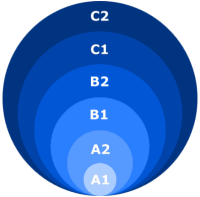
Each level is fully defined with exact learning objectives and 'can-do' factors to make sure you follow the learning in every section.
According to the CEFR, you reach fluency after finishing the 4th level, also known as the B2 level (vantage or upper intermediate).
With the B2 level, you're able "to interact with a degree of fluency and spontaneity that makes regular interaction with native speakers quite possible without strain for either party." (Council of Europe)
The CEFR has a pretty good logic for their curriculum; that's why most course providers are geared to the CEFR guidelines when creating their content. As a result, they usually offer courses in one of the 6 levels we just looked at.
There's nothing wrong with that, but the problem we find is that the A1 level takes around 80 hours to complete while other levels may take up to 220 hours per level.
This is just too many hours to keep your motivation going. When it comes to learning a language, motivation is a crucial factor in your learning speed.
This is why you need a system to break down your learning into manageable chunks. As the old saying goes, "you wouldn't eat an elephant in one bite."
This saying isn't the start of some strange recipe but what it actually means is that you need to break down your big goals. Anything is achievable if you can break it down into small enough objectives. If you try and take on too much, you'll end up losing motivation. Therefore, to learn Spanish fast you need to keep hitting small goals.
A good syllabus should keep you motivated
Rather than following the 6 levels of the CEFR (or 10 levels of ACTFL), it would be better to use a system or course with more achievable levels to keep you motivated.
The better courses have many levels which slowly build up a student's knowledge without them feeling overwhelmed (or downright bored!) at any point.
Here at FU International Academy Tenerife, we design our Spanish classes according to the CEFR language levels.
However, we take things a step further and divide the first 4 CEFR levels into 24 sub-levels. Each sub-level has its own content, learning objectives and an exam at the end.
Aiming for Spanish Fluency?
To achieve fluency in Spanish, according to the CEFR, you need to reach level B2. For students who aim for fluency, we use our own 24 levels to get you to that B2 level in Spanish.
We call this the "24 Level System to Spanish Fluency".
Aiming for Spanish Mastery?
We've divided the rest of the 2 levels (C1 & C2) into another 24 levels.
We call this the "48 Level System to Spanish Mastery" .
Save 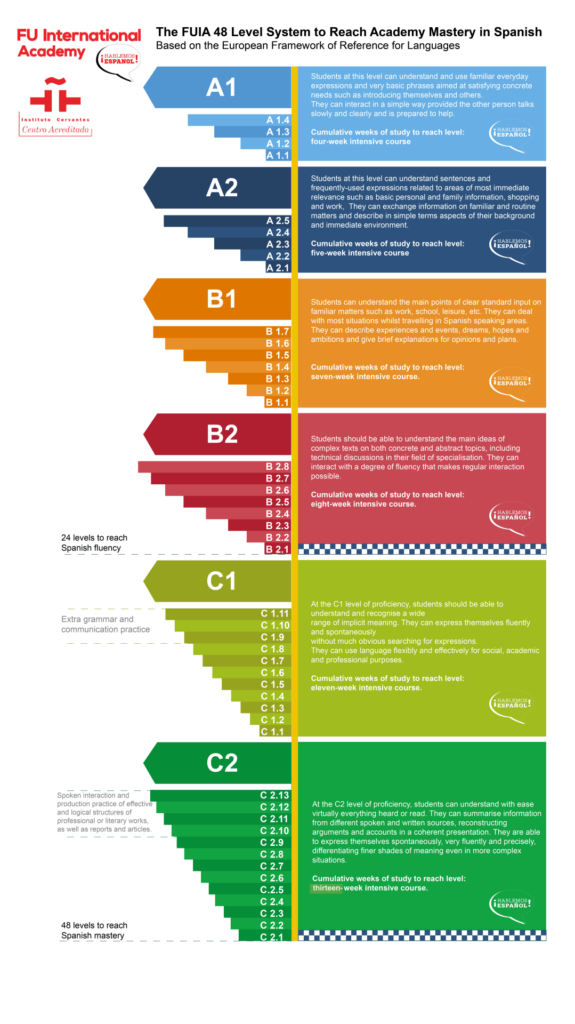
If you're looking for a Spanish course or a teacher, make sure that you can level up more easily so you stay motivated throughout your learning.
Check out our Spanish live lessonsthat ensure you to level up the right way to Spanish fluency or mastery!
Find out What Type of Language Learner You Are
To guarantee maximum language learning success, it is important that you find out what type of learner you are. Figuring this out will help you to structure your study sessions and to learn Spanish more effectively.
Keep in mind though, your learning type is a guideline to know which type of content you should concentrate more on. In reality, you always need to use a mixture of different learning types especially when learning a language, as both communication and social interaction aspects are important.
Let's find out which of the 5 language learning types you can best identify with.
- Visual – Learn through sight, and use of charts and graphs.
- Aural – Learn through sound and music.
- Verbal – Learn through speech, both written and oral.
- Social – Learn through groups and conversing with others.
- Solitary – Learn on your own and through reflection.
Visual learner
Save 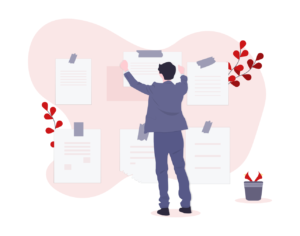
The first learning type and most common one is the visual learner. About 60% of the world's population learn best through visual techniques. A visual learner might have a hard time responding to words alone; what they need instead are visual aids and stimuli. Do you:
- Sometimes catch yourself reading a book and at some point you realize that you don't even remember what was written on the last page?
- Get easily distracted by movement in the classroom?
- Have a great sense of direction and know how to read a map easily?
- Immediately forget the name of people you meet, but you can remember their faces?
Then you might be a great visual learner!
Because visual learners are usually more creative and have rich imaginations, they are great spatial learners. Using patterns, shapes and color codes works much better for them than reading through a long written text.
Learning techniques for visually-stimulated people include the use of whiteboards, images, photos, graphs, maps, drawings, infographics, color coding notes, creating subtopics, mind-maps, and flashcards with both words and pictures
It is definitely beneficial to watch Spanish TV shows or movies, write notes with names of things on them to remember vocabulary or create flashcards with pictures.
Visual learners may find that self-study Spanish courses and Resource Sheets may work best for their learning.
Aural learner
Save 
Are you one of those people who remembers a person's name, but not their face? In this case, you might be part of the aural or auditory learners. You need to hear information in order to learn and understand effectively.
While others are having a hard time getting through a never ending lecture, you easily grasp and remember the information that was given. Auditory learners tend to scrutinize things, open group discussions and verbally express their interests.
In order to properly remember information, they must orally repeat what they see, re-listen to recorded lectures or speeches and, since they are easily distracted by noise, need a quiet study environment. An auditory learner might remember every detail of a conversation you have with them or know the lyrics to every song you hear on the radio.
The best techniques to learn efficiently are through detailed verbal instructions, recited texts, information read or spoken out loud, and interesting and pitch-changing voices.
Do you think you are an auditory learner?
Then why don't you try recording yourself reading a Spanish text out loud and listen to it? You could also check out our new Spanish Podcast or listen to our playlist of easy songs to learn Spanish . You may also find that Resource Sheets and self-study Spanish courses are great ways for you to learn Spanish.
Verbal learner
Save 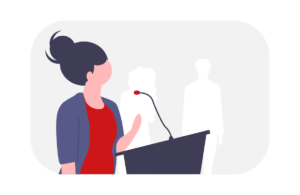
The third learning type is the verbal learner. Processing new information comes easily to them if it is presented in the form of written texts or verbal communication.
Charts or diagrams are more understandable for verbal learners when converted into words. Pictures and other visuals are easier to remember when they have a detailed description added. Text-based input and output is the key to successful studying for verbal learners.
During lectures, verbal learners will write down everything they hear, and take notes of their thoughts. With the focus on writing out information several times, repeating and reading over and over again, studying and memorizing is made easy for them.
If you identify as a verbal learner, private or group Spanish lessons may be most effective for you.
Social learner
Save 
If you're a people person, then you're a social learner! Social learners enjoy communicating and socializing with other people both verbally and non-verbally. They listen well, prefer to socialize after class, bounce ideas off of others, work through tasks in a group and are often trusted by others for their advice.
The best techniques for social learners are anything in a group. Some examples include group classes, role-playing, and forming study groups to work through content together and share ideas.
If you're a social learner, then why not sign up for a Spanish group class or a conversation lesson with a Spanish teacher!
Solitary learner
Save 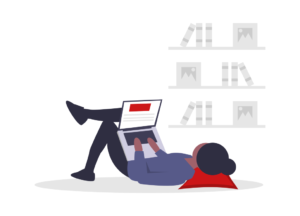
Contrary to social learners, solitary learners are people who prefer to learn on their own. They work best when they can focus on their thoughts and feelings without being distracted by others. Most of the time, this learning type is suited for socially introverted people. However, some extroverts prefer to study alone when they are learning something.
Solitary learners prefer to spend time on self-analysis, are concerned with goals and outcomes, think independently, and write down their thoughts for self-improvement.
Learning techniques that work best for solitary learners are self-study, personal reflection, and keeping a journal to write down thoughts or concerns.
Self-study Spanish courses and Resource Sheets are great ways for solitary learners to improve their Spanish.
If you know your preferred learning type, now you can better choose the right learning resources for you.
How to Memorize the Spanish Language
Now that you know your learning type and have identified the best techniques for you to learn Spanish, we can talk about the importance of memorization in learning the language.
A lot of our learning in life relies on our ability to retain information. In order to memorize the Spanish language, you must have an interest in it. But in addition to having an interest, you must also have a learning system in place (as we mentioned earlier) and a strong willingness to learn.
Two methods to memorize the Spanish language are Memory Palace and Spaced Repetition. These methods provide a structure to allow you to not only absorb what you're learning in Spanish, but to retain and apply it.
Memory Palace
Save 
Memory retention is a key part of the Memory Palace method. In order to learn and retain information, you need to recall it by forming a memory palace otherwise you'll just forget it.
So what is a memory palace and how do you form it? A memory palace essentially is an imaginary estate in your mind; something you visualize. It works by visualizing something that you are intimately familiar with such as your home or workplace, and associating it with what you're learning. The steps to create a memory palace are:
1. Select your Palace
You need to select a place that you are familiar with and define a particular route in that place.
2. Identify distinctive features
Pay close attention to the features of the place you selected and any details of it. The aim is to create memory slots which are clues that contain a single piece of information to help you jog your memory.
3. Imprint your Palace
The place and route need to be 100% imprinted in your head. You need to make sure you can fully visualize it and all its features in your mind.
4. Begin association
The next step is to fill all those memory slots you created in step 2. You do this by taking a known image and placing it with an element you'd like to memorize. The more crazy or ridiculous the association is, the more likely you'll remember it.
5. Visit your new Palace
You need to spend time in the 'place'. Repeating the journey a few times will help with memory recall.
To learn how to put this into practice, check out this memory palace example.
When applying this method to memorize Spanish, you can visualize the text or certain facts you learned after every lesson and store them in your memory slots. This will make the process of memorizing Spanish easier as the words and images you've created in your Palace will come back to you when you need them.
Spaced Repetition
The flaw with the Memory Palace method is that it is tedious and requires a lot of effort. Spaced repetition is one of the more effective ways to memorize Spanish. Spaced Repetition is learning the same information or reviewing it at gradually increasing intervals, so it stays constantly fresh in your mind.
You don't need to repeat your learning every day in order to memorize it; you just need to do it frequently enough so that you're comfortable with remembering it.
Memorizing Spanish words is not enough however to effectively learn Spanish. Your ability to effectively learn also depends on other factors such as the method you are using to learn Spanish.
Spanish Learning Methods - Online & Presential
Self-study
Learning Spanish without a teacher is possible but it's definitely not the fastest way. Even if you learn with a teacher, you have to spend a good amount of time learning the content on your own too. Whether it's going through vocabulary lists, understanding grammar rules, reading or training your listening skills with audio or videos, there's definitely some homework for you.
In the following, we concentrate on the best Spanish self-learning methods you can choose from.
Resources to teach yourself Spanish
We regularly post articles that help you find the best resources to learn Spanish yourself. Below is a selection of our free articles which give you the best free resources you can use to teach yourself Spanish from home.
- 19 Free Podcasts Every Spanish Learner Should Listen To
- The 17 Best Youtube Channels to Learn Spanish
- The 7 Spanish Blogs Every Learner Should Read
- The 7 Best Free Spanish Learning Games
- Spanish Movies That Will Help You Learn Spanish
- Easy Spanish Songs – Learning the Fun Way
- How to Learn Spanish with a Dictionary
If you want to know where to start, you'll need to figure out your exact level of Spanish. The CEFR self assessment grid can be a little hard to follow, especially if you're a beginner. Check out our free and easy Spanish level test to find out exactly what level you're at instead!
After figuring out your level, you can use one of our Resource Sheets to reach the next level. Our online self-study sheets give you that important system we talked about at the start of this article. Every Resource Sheet includes clear learning objectives and links with more than 15 hours of educational, Spanish content in order to reach the next level.
Self-study courses
Save 
Another option to improve your Spanish is an online self-study course. We've researched the 11 best self-learning Spanish courses online for you.
Our own course of course is not to be missed in this list. We chose to differentiate our courses with a unique combination of self-learning, webinars and, teacher and community support.
However, self-study isn't always enough. You can use every resource in the list above to improve your skills but there will always be one part missing – learning how to speak Spanish.
Teacher guided classes
Save 
Private lessons online
Conversational skills are one of the hardest to practice because you need the help of a native speaker. If you still want to study from home, one option is to work on your skills yourself and then take conversation classes to supplement your learning.
Find out more about our online conversational classes and general Spanish classes, and how we can help you finally learn to speak Spanish!
Presential classes with your local Spanish teacher
With this option, you have classes with a Spanish teacher or Spanish school that is local to where you live. Although presential classes with a local Spanish teacher are a great way to learn and practice your Spanish in person, it lacks the wholesome Spanish learning experience that a full immersion course abroad offers.
Hybrid Spanish Courses - Self-study Courses with Tutoring Support
Why not combine the best of both worlds with a hybrid Spanish course! A unique offering at FU International Academy Tenerife, these 2-week courses use a combination of self-learning, webinars, Spanish teacher and community support.
The Spanish teacher is in constant contact with the student during the two weeks of learning, answering questions, correcting homework and conducting 2 webinars as well.
Full Immersion Courses Abroad
Save 
This is one most people have heard of in terms of Spanish immersion, but what does it actually mean? This method of learning requires you to surround yourself with the Spanish language, quite literally.
This will usually be through a language course abroad as it's hard to create an immersion course without being in a Spanish speaking country. Of course, nothing can beat a Spanish immersion course in Spain. Think intensive classes with a native Spanish speaking teacher every day and accomodation in a Spanish speaking family, all whilst immersing yourself in the local way of Spanish life 24/7!
If You Learn with a Teacher, Ask for Their Teaching Methods
While there is agreement over what to learn in Spanish, and in which order, there are a lot of different methods used in the classroom to teach Spanish.
Here at the FU International Academy in Tenerife, we have been teaching Spanish for twenty years. Our experience led to the creation of our own system of learning. Once you have a good syllabus in place, you need good teaching techniques. This is why we base our actual day-to-day teaching methods on scientific research.
The best way to teach is by using different styles and methods, rather than just sticking to one outdated method which you first saw written in chalk on a blackboard! We design each class with relevant and varied activities which both help you to learn and stay motivated.
Krashen's Theory of Second Language Acquisition
We also strongly believe in the theories of language scientist Stephen Krashen. Krashen's hypothesis suggests that you will learn a language at the optimal rate as long as you can understand the learning material and your classes are aimed slightly higher than your current level.
Find out more in our video below.
5 Classroom Teaching Methods
The teaching methods for Spanish language learning that we apply in our classrooms in Tenerife and in our online courses are:
1. Direct
Also known as the 'natural approach', this method tries to replicate how you learned your native language as a child. The teacher will only use Spanish and ban using your native language in the classroom. They will usually use this method by asking questions in Spanish and they'll then gently correct you when you get something wrong. This is a great method for improving your spoken Spanish but it's difficult to understand grammar rules using the direct method only.
2. The Communicative Approach
The communicative approach aims to impart communication skills not only for the classroom but for real life situations in particular. The focus lies on being able to have a flowing and interactive conversation instead of dull, memorization of grammar.
By involving someone in actual conversations within a realistic situation or context, they will learn how to use the language and be able to produce a meaningful conversation themselves.
Games, role plays and problem-solving tasks are often used to apply this method in the classroom to provide the student with immediate reaction and evaluation, as well as practice spontaneous conversations and language flow.
3. The Structural Approach
Often the position of the words in a sentence are different in the Spanish language when compared with the mother tongue of the student.
Each language has its own rules of arrangement and structure of letters, words and phrases. In order to produce a meaningful sentence, it is important to let go of the patterns of your own language, and understand and apply the meaning behind the Spanish grammar.
The structural approach aims to provide the learner with the grammatical background, and knowledge of arrangements and patterns in a certain order. This is called structures of the Spanish language. These structures are used to convey meaning and sense in order to create a flowing and logical conversation.
4. The Flipped Classroom Teaching
Normally, a day of lessons looks like this – you go to school early in the morning, learn new things and in the evening, you deepen what you learned with homework.
This can be too much for a person depending on their other commitments in life. It can also be very demotivating because everyone learns at a different pace.
This Flipped Classroom Teaching Approach addresses this problem exactly and makes the student their own teacher. Instead of explaining the issues in school and doing homework at home, each individual sits down at home watching educational videos and other materials provided by the teacher.
The approach allows each individual to learn at their own pace and with their own concept. The individually prepared and learnt material is then studied and deepened together with the group and the teacher in class. This leaves more time in the class for individual attention, for answering more complex or very difficult questions, and additional time for joint exercises and conversation.
5. Grammar-translation
Although it might sound complicated, you will definitely have done this if you've ever studied a language in a classroom. Grammar-translation is when your teacher explains a grammar rule to you in your language, then asks you to complete a gap-fill or verb conjugation exercise in Spanish. This can also be followed up with a paragraph to translate for homework.
At FU International Academy in Tenerife, we use a special combination of these different teaching methods to ensure you learn Spanish the most effective way possible.
How Long Does It Take to Learn Spanish?
This is a good question. How fast you learn Spanish or any other language depends on the following:
- The quality of the system (syllabus & methods)
- Motivation, efforts and talent
- Your time investment
Quality of the system (syllabus & methods)
We've already spoken earlier about the importance of having the right system when learning a language so it should be familiar to you now, right? So let me tell you something about the second point of motivation, efforts and talent.
Motivation, efforts and talents
When learning a language, you really have to want it. You need the right motivation. This then leads to the question…
WHY do you want to learn Spanish?
- Do you need Spanish for a job or studies?
- Are you about to move or travel to a Spanish speaking country?
- Do you have a Spanish speaking partner?
- Or do you just enjoy learning new languages?
Once you identify why you want to learn Spanish, you're more likely to have greater motivation and are willing to put the necessary effort into achieving your language goals.
Both motivation and effort go hand in hand, and both have a huge impact for reaching the next level of Spanish. If you don't tryhard, you won't achieve your goals. How well you learn a language ultimately depends more on your own efforts rather than your teacher's efforts.
Do you need a special talent to learn a new language?
Some people are definitely more talented for language learning than others. Of course, it's nice to have talent but it's not necessary.
What's more important is the fun of learning and lasting motivation. Above all this is the right learning plan and method.
Time investment
Save 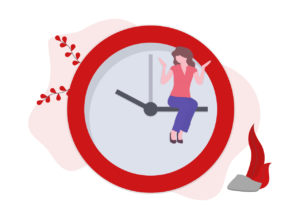
It's very hard to predict the amount of time you need to reach a fluent level in a language as it really depends on so many conditions, but let's try to do the calculations anyway.
So let's assume you have found your WHY, and you are fully motivated to learn to speak Spanish and put the necessary effort into it.
Let's also assume that you have an average talent to learn languages and your final goal is to speak Spanish fluently. So now, we actually try to answer the following question…
How long does it take to speak Spanish fluently?
As we mentioned earlier, according to the CEFR, you reach fluency in Spanish after finishing the B2 level (vantage or upper intermediate). With the B2 level, you're able "to interact with a degree of fluency and spontaneity that makes regular interaction with native speakers quite possible without strain for either party." (Council of Europe)
We have divided the A1, A2, B1 and B2 level of the CEFR into 24 more detailed levels. To reach your goal of Spanish fluency, you will need to finish these 24levels (Spanish Mastery takes another 24 levels to complete, so 48 levels in total). Every level has its own learning objectives.
We have divided the learning content in a way that every level needs more or less the same amount of time investment, dependending on the way you learn.
T here are 5 different ways of reaching the next level of Spanish:
- Self-learning with random Spanish resources
- Self-learning with our Spanish Resource Sheets (following a syllabus)
- Spanish online courses with self-study content
- Private Spanish online lessons with a teacher using whiteboard technology
- Spanish immersion intensive courses in a Spanish speaking country
Self-learning with random Spanish resources
Looking for Spanish content on your own, and learning just randomly without a teacher or a syllabus, is definitely the slowest way of learning Spanish.
There's also a very good chance that you'll lose motivation along the way and give up on it sooner or later.
We can't even estimate how much time you would need to make sufficient progress!
Self-learning with our resource sheets
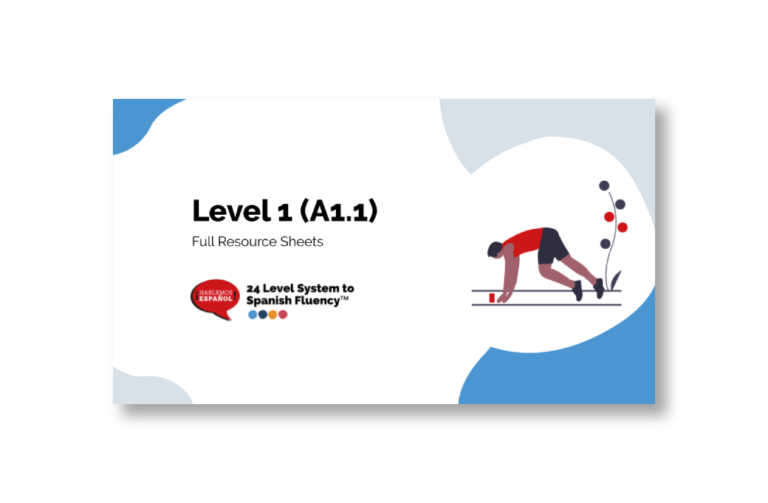
-
Save
Our Resource Sheets enable you to read, listen to audio, watch videos and do all the exercises on your own but with a course of study. To complete a level once, you need on average12hours. Together with at least one repetition and additional vocabulary learning, you'll easily reach 24 hours. But, this is still not enough.
The speaking and communication part is missing when learning without a teacher or a speaking partner. You should add at least 6 hours of private conversational classes or general classes with a native speaker (who follows a syllabus).
So, to finish a level with Resource Sheets would take you around 30 hours. To finish all 24 levels to reach fluency, you would need approximately 720 hours.
Spanish online courses with self-study content
Spanish online courses are similar to structured resources. The difference is more quizzes and a final exam at the end of the course.
For example, finishing a level with our 2-week course would cost a total time investment of approximately 10-12 hours. With one repetition, it's around 24 hours. However, with an online course, the communication is missing. We recommend adding 4 hours of conversationalclasses or general classes.
Therefore, finishing a level with an online self-study course would take you around 28 hours. To finish all 24 levels to reach fluency, you would need around 670 hours.
Private Spanish online lessons with a teacher using whiteboard technology
Save 
This is probably the most effective way of reaching the next level of Spanish online. Based on our experience, you'll need a total of approximately 6 hours of online classes plus another 10 hours of self-studying.
So in total, you'll need approximately 16 hours in total to reach the next level with private online lessons. That's 384 hours to reach a fluency level.
The Best Way to Learn Spanish
Spanish immersion intensive courses in a Spanish speaking country
Our intensive Spanish courses here at FU International Academy Tenerife contain 20 x 45 minute classes per week and are one of the fastest ways to learn Spanish. Studying in a Spanish school is also generally recognized as the easiest way to learn Spanish. This is because you have the help of a native teacher and a Spanish learning system.
You can achieve one of ourSpanish sublevels every week. So to reach your next level of Spanish, it would only take you just one week! In total, it's 15 full hours in the classroom plus 5 hours self-study, so 20 full hours per week and level.
To reach Spanish fluency, you would have to invest 24 weeks (480 hours) in total.
Save 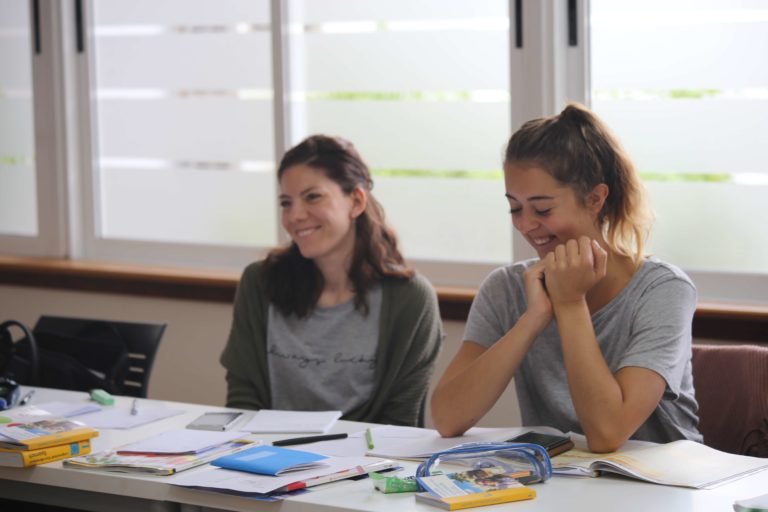
For us, nothing can beat a Spanish immersion course and we highly recommended it because it requires that you surround yourself with the Spanish language.
Conclusion
Learning Spanish takes time and work. You can come to experts in teaching Spanish for advice (like us! 😉), but at the end of the day, you're the one who has to do all the work.
Don't believe any gurus trying to sell you the newest programs and methods, or quick fixes to learn. If it sounds too good to be true, it probably is.
You're the one who needs to practice your skills. Your reading, listening, speaking and writing skills aren't going to magically develop overnight (you can try sleeping with your textbook under your pillow first if you want, but we recommend practicing Spanish while you're awake!).
You need to learn the vocabulary and grammar yourself; no one else can do that for you. However, if you decide right now to put the effort into achieving fluency, then we're here to help!
Check out the options:
- Free Online Beginners Course
- Spanish Resources Sheets
- Spanish Online Courses
- Spanish Online Lessons
- Spanish Courses in Tenerife
Or sign up for our newsletter.
All the best on your Spanish learning journey!
Save 
Want to learn Spanish
the fastest way possible?
With a flexible class schedule, you decide when's the best time to take private Spanish lessons!
We teach you according to our 24 Level System to Spanish Fluency, where we clearly define your next goals to be accomplished fast so you stay motivated all the way to Spanish fluency.
how to become fluent in spanish
Source: https://letsspeakspanish.com/blog/best-way-to-learn-spanish/
Posted by: fortnerstoult.blogspot.com

0 Response to "how to become fluent in spanish"
Post a Comment